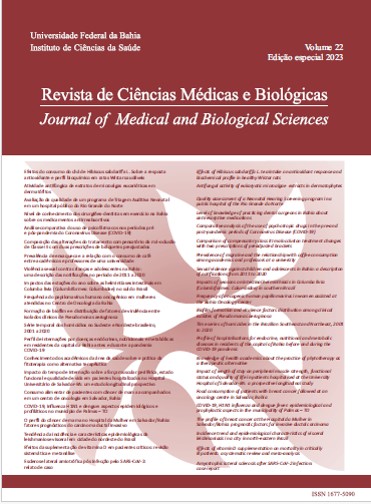BIOFILM FORMATION AND VIRULENCE FACTORS DISTRIBUTION AMONG CLINICAL ISOLATES OF Pseudomonas aeruginosa
BFVFDACIPA
DOI:
https://doi.org/10.9771/cmbio.v22i4.53209Palabras clave:
Pathogenicity, Adherence, Motility, Phenotypic featuresResumen
Introduction: Pseudomonas aeruginosa is an opportunistic microorganism frequently isolated in the hospital environment and has been classified by the World Health Organization as a critical pathogen due to its resistance to antibiotics and its varied virulence factors. Objective: To evaluate biofilm formation and the expression of virulence factors of 30 clinical isolates and 2 standard strains of P. aeruginosa. In addition, this work aims to analyze the distribution of virulence factors in the different categories of biofilm formation. Methodology: Biofilm formation assays were performed in polystyrene microplate with crystal violet coloring and the strains were classified in groups. Other virulence factors were studied with specific phenotypic detection methods. Results: All P. aeruginosa were able to form biofilms, with 46.9% classified as strong formers, 25% as moderate and 28.12% as weak biofilm formers. Most isolates expressed the virulence factors analyzed and among them, pyoverdine was the most prevalent, followed by the production of lipases B, hemolysin, and protease. Lipases A showed the lowest incidence. Conclusion: Although no significant correlation was detected between biofilm formation of P. aeruginosa clinical isolates and virulence factors, it was observed that in the strong formers group there was expression of alkaline protease and lipases B in all strains. The results suggest that the pathogenicity of P. aeruginosa is a multifactorial phenomenon and that virulence factors, although present in most isolates, occur independently of the biofilm formation category of the studied strains.
Descargas
Descargas
Publicado
Cómo citar
Número
Sección
Licencia
Derechos de autor 2024 Journal of Medical and Biological Sciences

Esta obra está bajo una licencia internacional Creative Commons Atribución 4.0.
A Revista de Ciências Médicas e Biológicas reserva-se todos os direitos autorais dos trabalhos publicados, inclusive de tradução, permitindo, entretanto, a sua posterior reprodução como transcrição, com a devida citação de fonte. O periódico tem acesso livre e gratuito.






